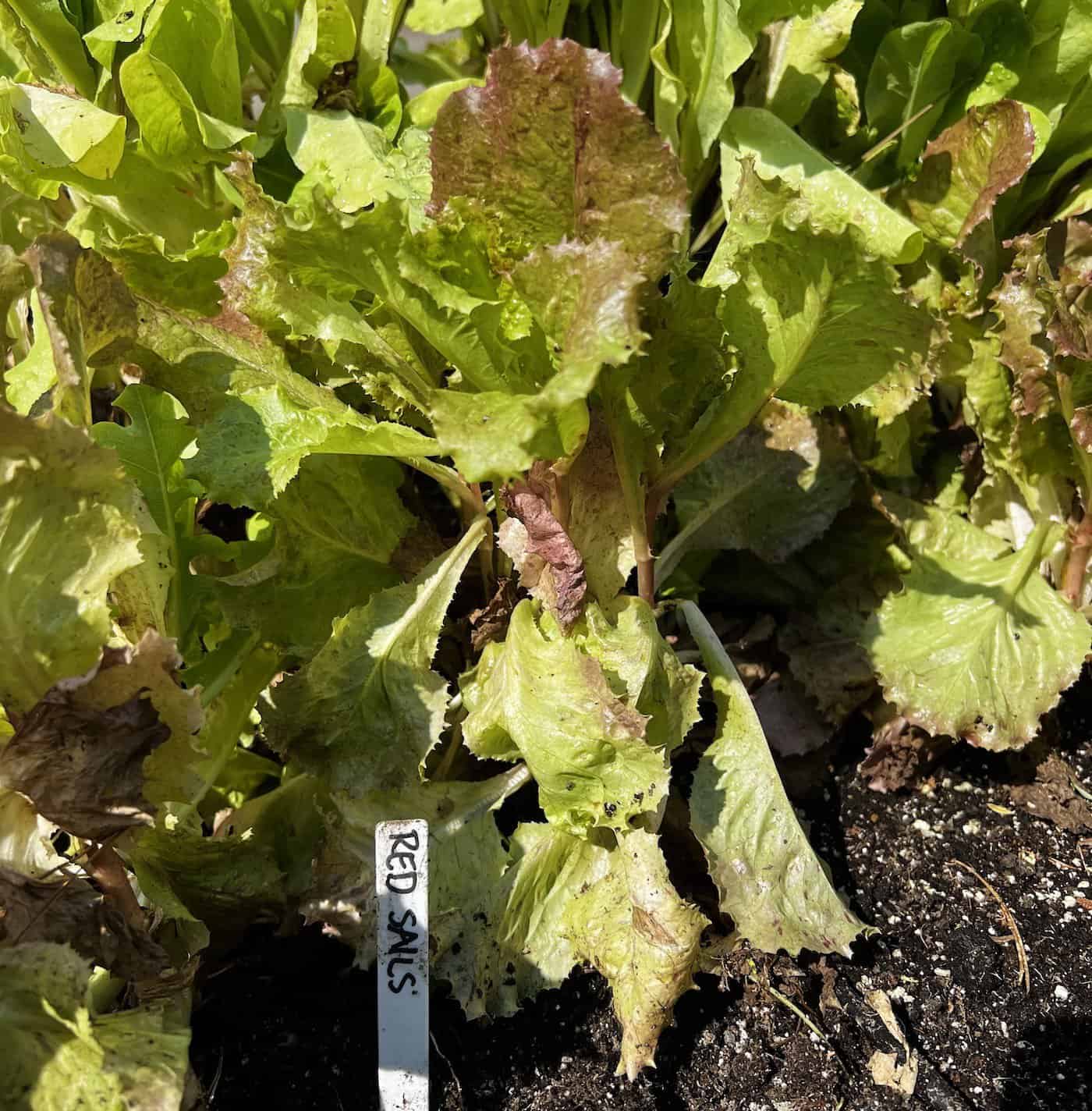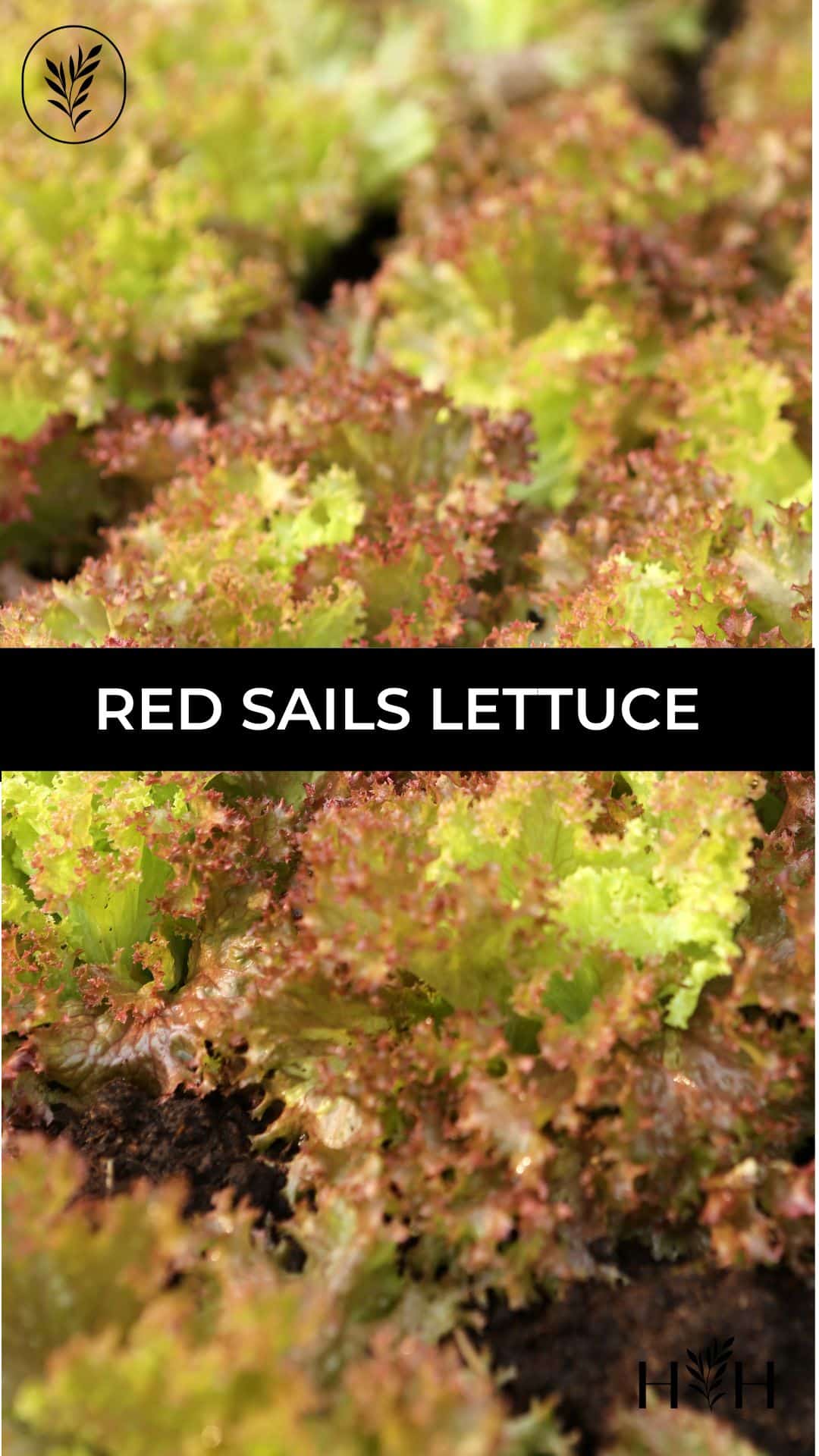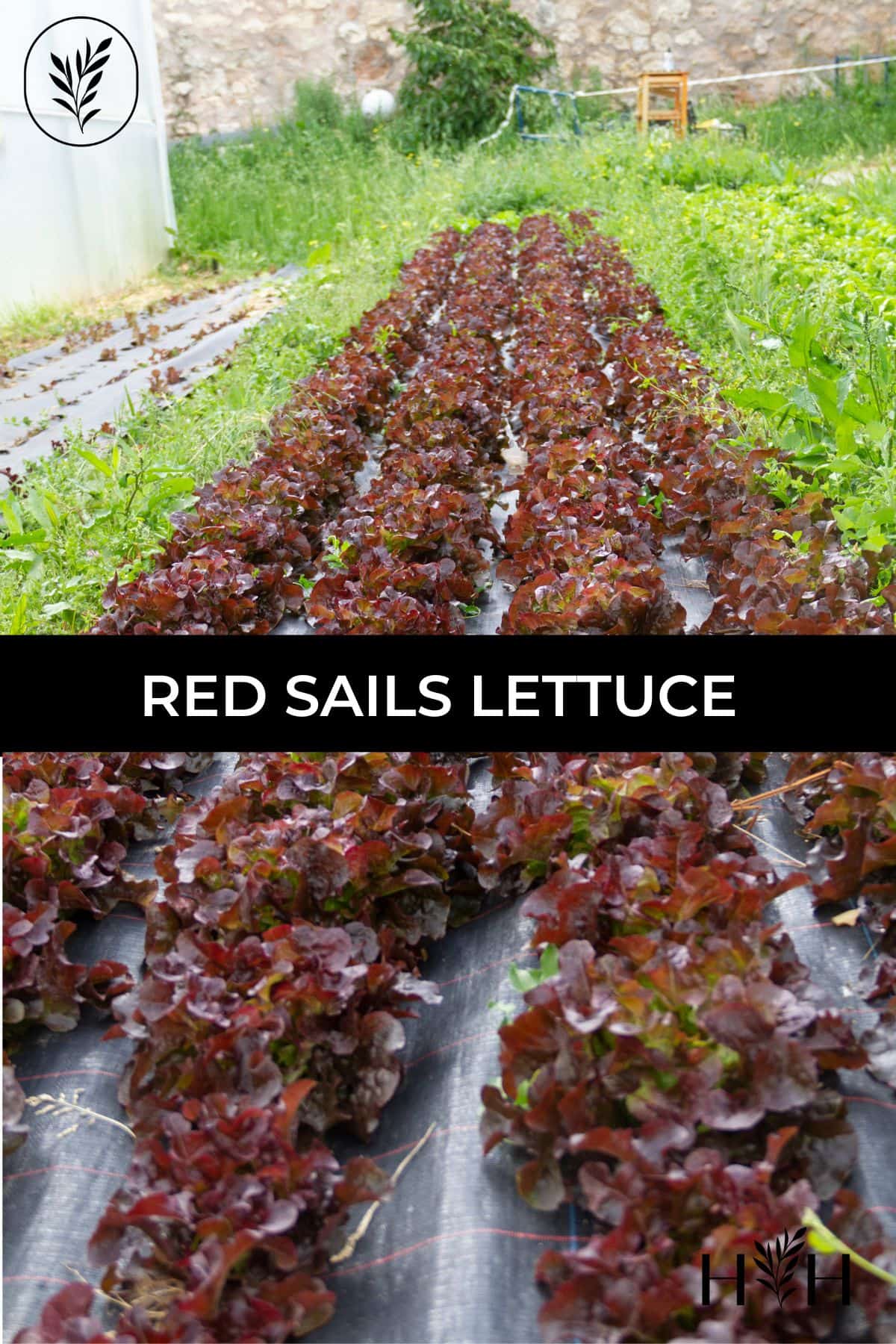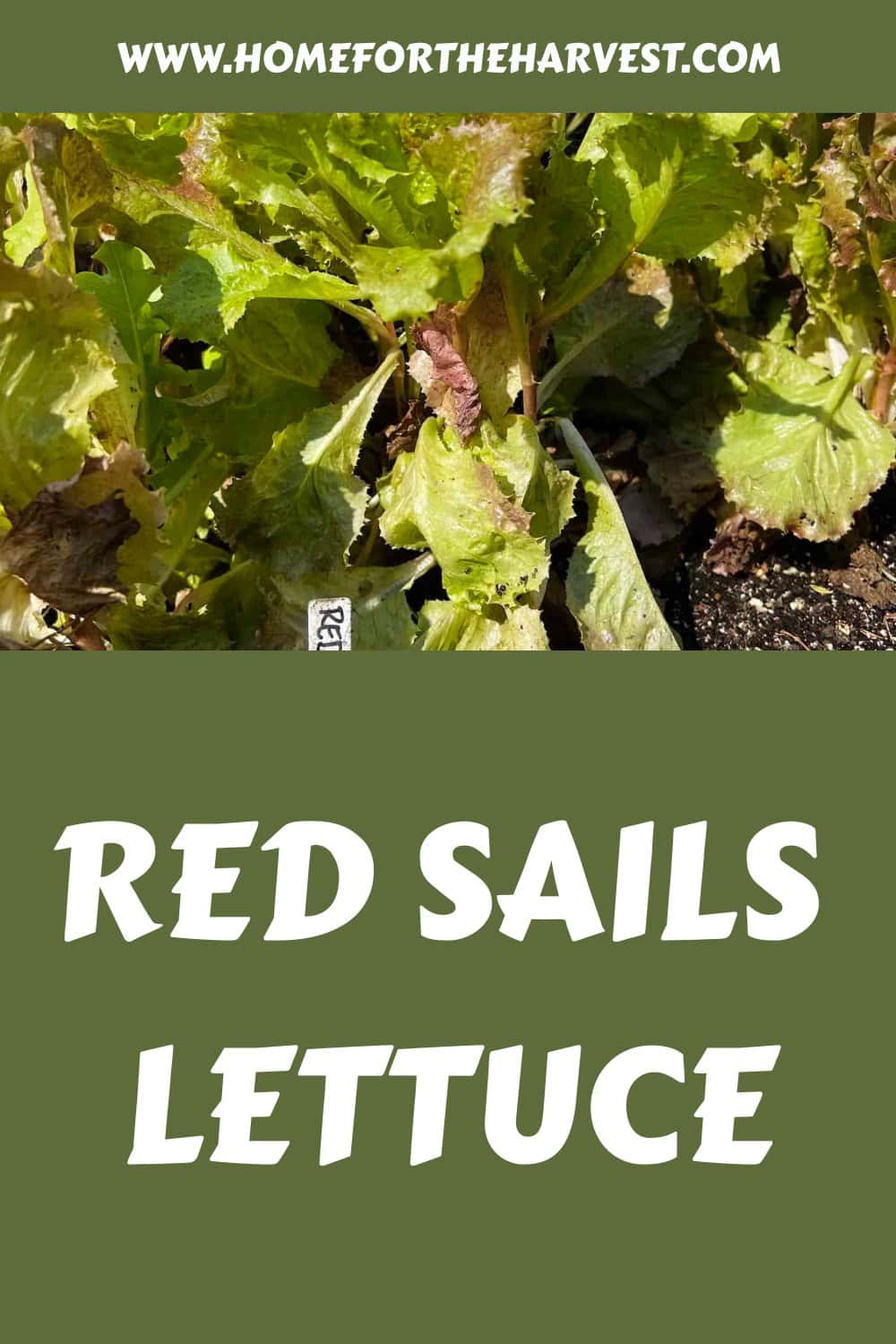If you’re looking for a new leafy green to add to your garden, consider Red Sails lettuce. This variety is a beautiful addition to any garden with its bright leaves and frilly red edges.
Red Sails lettuce is a gourmet lettuce variety known for its burgundy-red frilly leaf edges. This leaf lettuce is popular in salad mixes due to its sweet flavor and fine texture. It’s easy to grow due to its natural resistance to bolting in the summer heat. Baby leaves are ready to harvest about a month after planting, while full-size leaves take about 55 days to reach maturity.
Read on to learn all about Red Sails lettuce and how to grow it.
Red Sails lettuce basics
The average grocery shopper hasn’t likely heard of Red Sails lettuce, but they’ve likely seen it. It is distinguishable from the other popular lettuce varieties because of its red ruffled leaves. It’s gorgeous loose-leaf lettuce that easily stands out amongst other lettuce varieties.
So, what does this beautiful lettuce taste like, you might be wondering? It’s known to have a mild lettuce taste, nothing too prominent about it, and possibly a very subtle sweet flavor at best. It’s more so a simple and gentle leaf, closer in texture to butterhead-type lettuce (see the four main types of lettuce here).
This luscious and lovely red leaf lettuce is an open-pollinated variety that attracts beneficial insects such as bees, butterflies, and other friendly neighborhood insects if left to flower. Not only will your lettuce garden be visually appealing because of the plant itself, but seeing its little visitors will also be a nice treat, as well.

Buying seeds for Red Sails lettuce
If you’re looking to purchase Red Sails Lettuce seeds, one seed packet (which usually has about 500-600 seeds) can cost anywhere from about $2.50 to $5.50.
Planting Red Sails lettuce
Red Sails Lettuce seeds can be planted both indoors and outdoors. The easier alternative is to buy seedling plants, but this is the more expensive route. So if you’re in the business of spending a little more to make things a little easier, then buying seedlings could be a good route for you.
Direct seeding outdoors is both cheap and easy—but it’s harder to control the plant spacing, and the tiny plants must compete with weeds. So no matter which route you take, you’ll be sacrificing in one area while gaining in another.
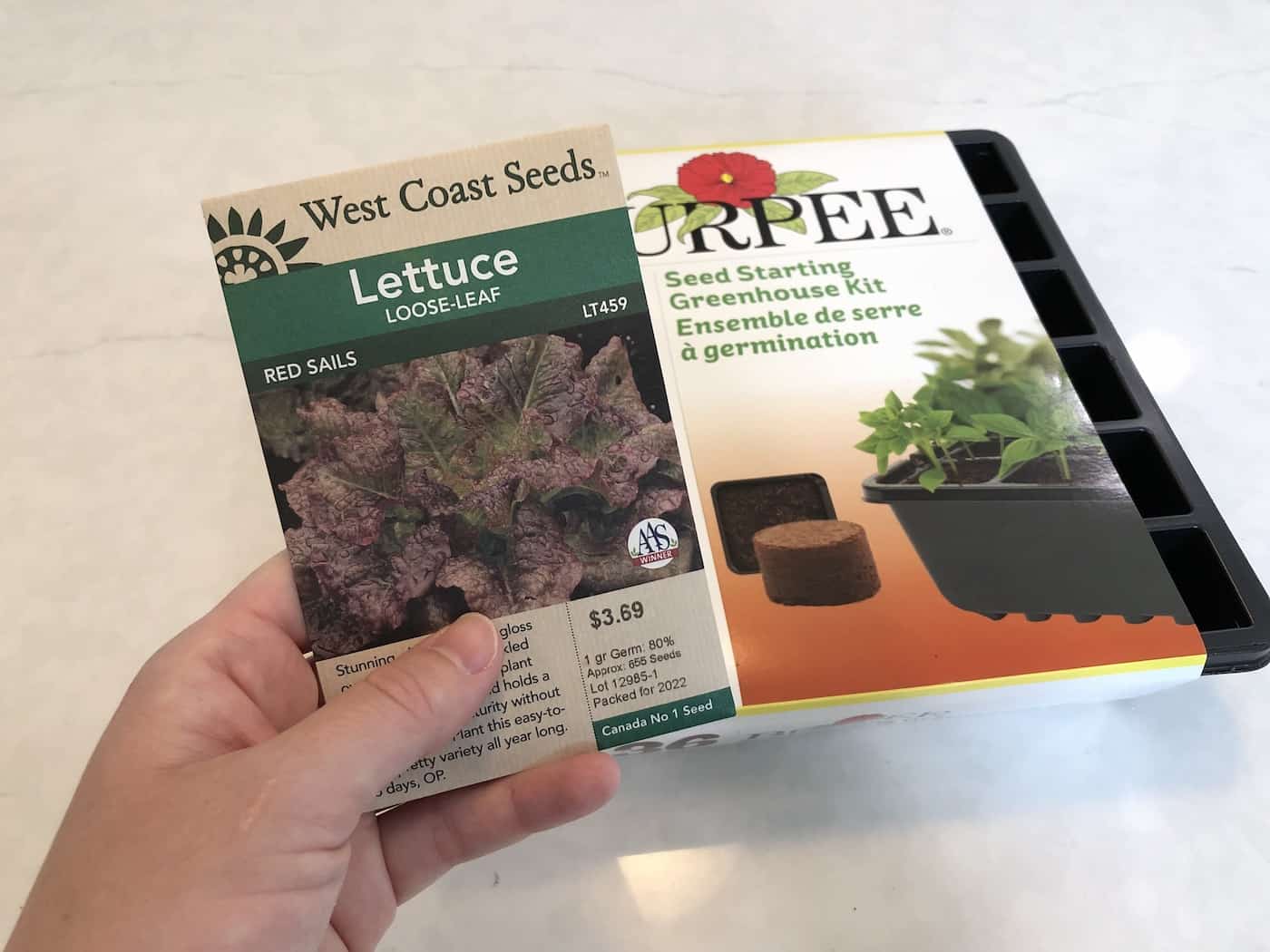
Planting lettuce seeds indoors for later transplanting
Many experienced gardeners get a head start by planting their seeds indoors and transplanting them outside once they’re about two to three inches grown. Plant 1-2 seeds in each cell of a seedling tray and put the tray on a seedling mat or heated floor for the quickest germination.
Cover the tray until the seeds have visibly sprouted. Then remove the cover. Once the seedlings are an inch or two tall, start to harden them off by bringing them outside during the day. The seedlings should be transplanted into the outdoor garden about 3-4 weeks after being seeded indoors.
Transplanting lettuce seedlings outdoors
In general, transplanting is best for gardeners wishing to harvest proper lettuce leaves (3″-6″ long), while direct seeding into the outdoor garden is best for baby lettuce greens. Whenever and whatever you choose, it’s best to remember cool weather is an ideal climate for this variety of lettuce.
You’re going to want to dig a hole into your outdoor garden for your new plant seedling. Then carefully take your indoor seedling from your indoor pot. You can also unravel any circling roots. This may take a little gentle tugging to ensure they don’t end up wrapping around themselves like they were starting to do in the smaller pot. Once you’ve sorted that out, you can then place it into your cleared space and backfill with soil.
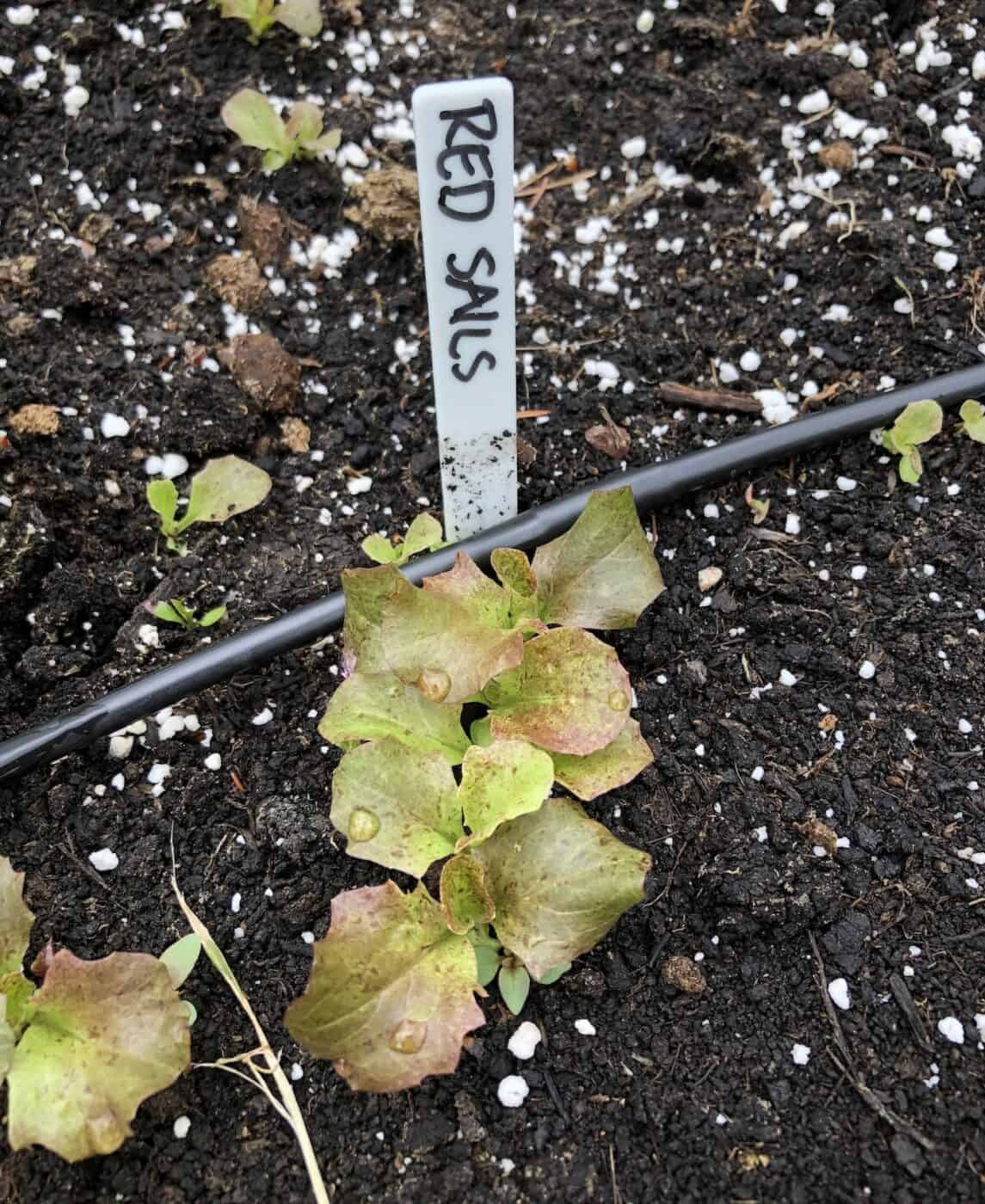
Planting lettuce seeds outdoors
Lettuce seeds can germinate in outdoor soil with soil temperatures in the range of 40°-75°F (4°-24°C). The seeds will take longer to germinate in overly cool soil, so consider waiting until the soil has warmed up a bit to plant the seeds.
Space lettuce seeds for baby greens quite closely, with 4–6 seeds per inch, in rows that are 2″-4″ apart. For full-grown plant heads, space seeds 8″ apart. Plant the seeds quite shallow at a depth of 1/8″-1/4″ deep (barely covered with soil) for optimal results. Keep the soil moist while the seeds germinate.
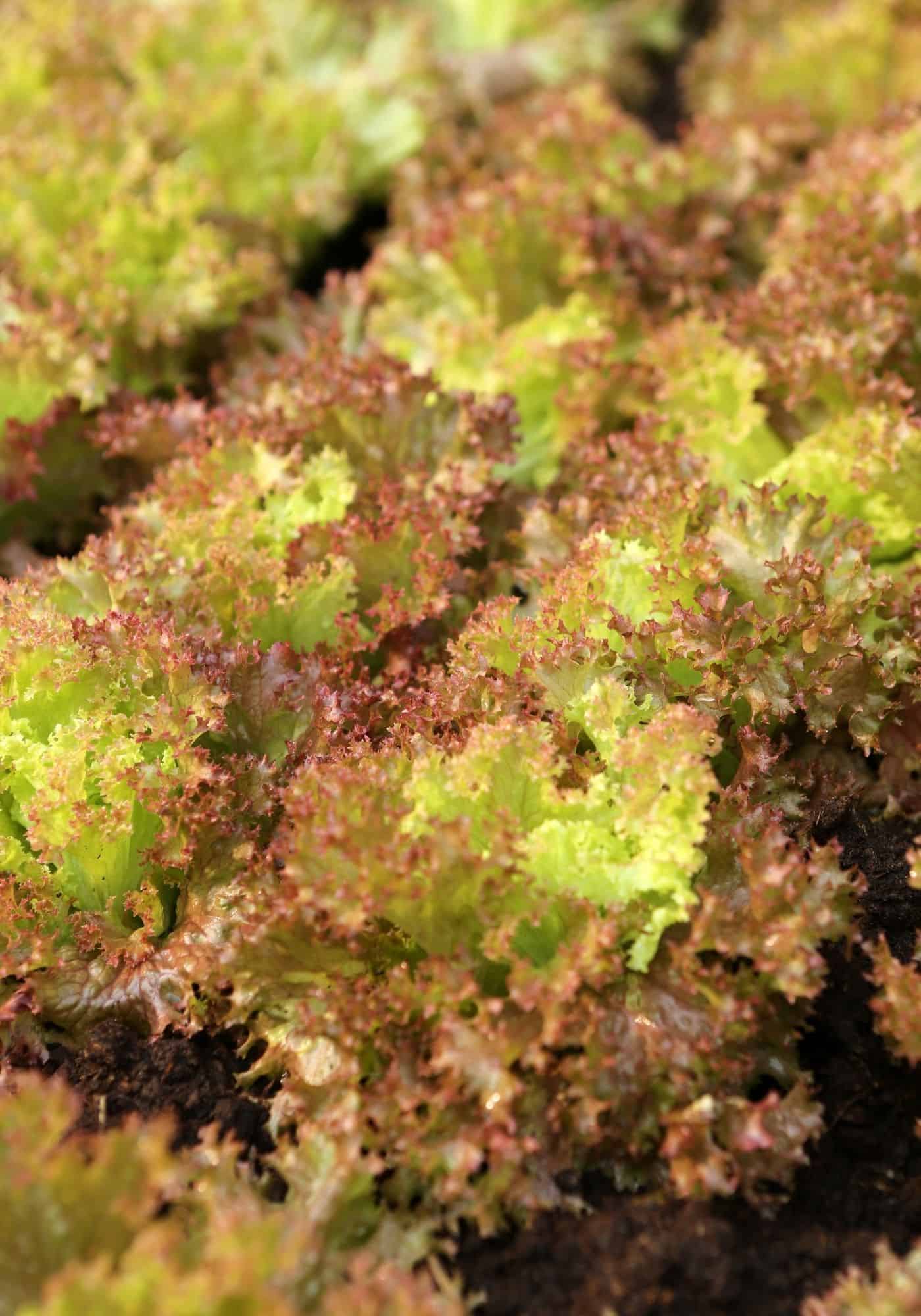
Growing Red Sails lettuce
This type of lettuce will thrive in cool temperatures, but that being said, one of the unique features of Red Sails lettuce is that it can actually manage in warmer climates in partial shade and high temperatures with a shade cloth. Unlike most lettuce plants, it won’t bolt as easily or quickly if managed just right, nor get the unpleasant bitter taste that other plants might develop.
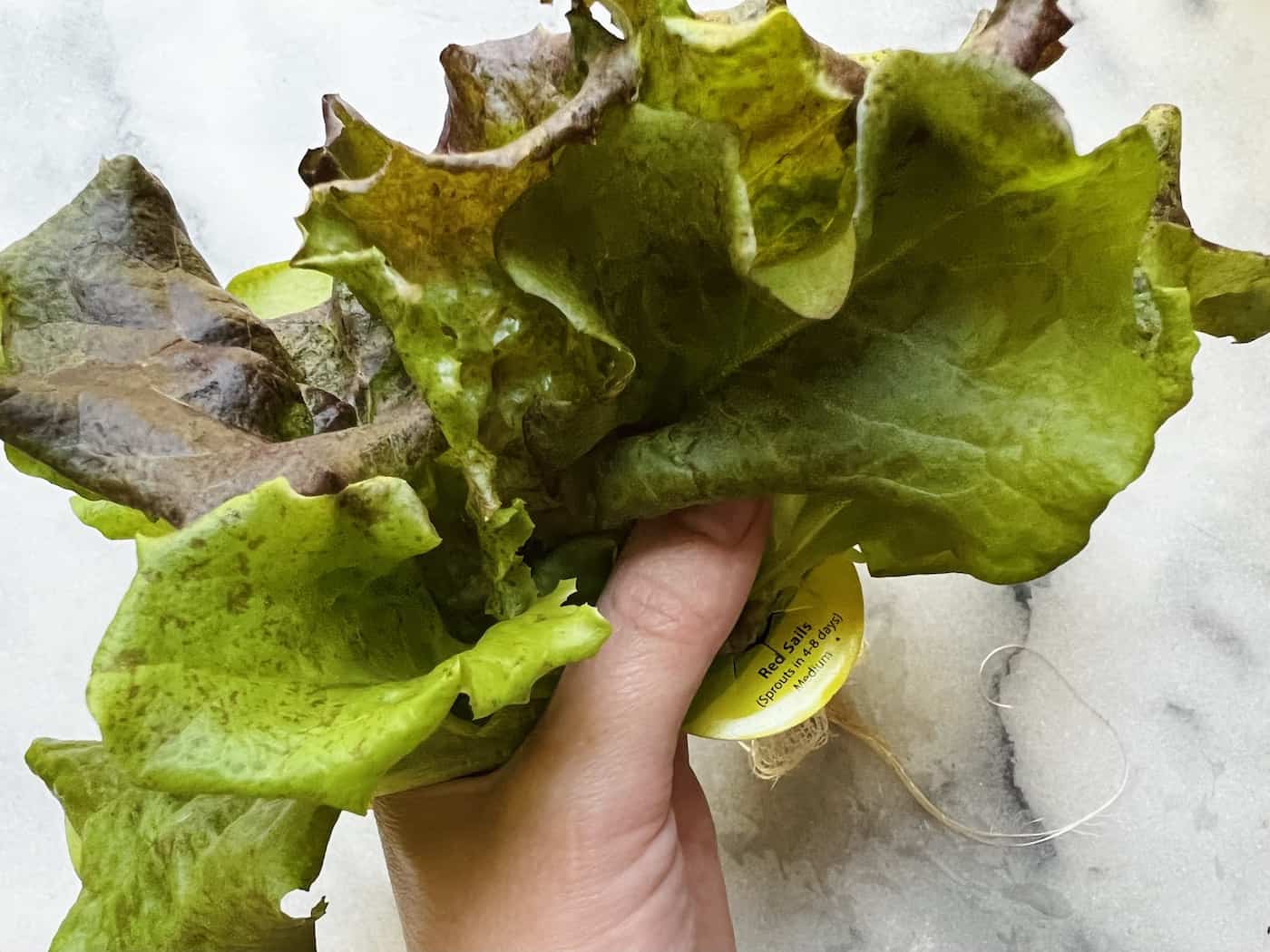
How to harvest Red Sails lettuce
If you want to harvest full heads of Red Sails Lettuce then it will take up to six weeks to grow. Once your loose head of lettuce is ready for harvest, you’re going to want to use sharp scissors or a serrated harvest knife.
For individual leaves, cut them off the outside of the plant with your cutting shears at a height of about 1″ above the soil. However, if you’re wanting just the small baby leaf lettuce for a salad, you can harvest whole heads at about 3” to 4” inches.
Recipes for Red Sails lettuce
Check out Martha Stewart’s Red Lettuce Salad if you’re wanting to incorporate these colorful lettuce leaves into an exciting side dish. It calls for blood oranges (although navel oranges work too), roasted shallot vinegarette, and crumbled ricotta salata cheese. Between the sweet flavor of the homemade vinaigrette and the rich colors of the red and green leaves, you’ll have a five-star delicacy on your hands!


